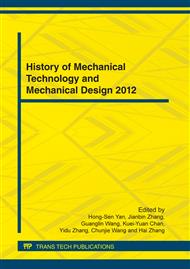p.217
p.221
p.226
p.233
p.238
p.242
p.247
p.251
p.256
Dynamic Modeling for the Impact of Compliant Legged Robot
Abstract:
Compliant elements play an important role in running and hopping legged robots for improving their speed and energy efficiency. The dynamic model of the compliant legged robot was developed by taking into account the slipping, vibration and distributed compliance of the legs. The parameter variations of the system after impacts were researched for different dropping height and angles by numerical method. Meanwhile, the effectiveness of the model was verified through explicit dynamics analysis software. All these results will provide a theoretical guide for the energy efficiency analysis and mechanical design of the compliant legged robots.
Info:
Periodical:
Pages:
238-241
Citation:
Online since:
April 2012
Authors:
Keywords:
Price:
Сopyright:
© 2012 Trans Tech Publications Ltd. All Rights Reserved
Share:
Citation:


